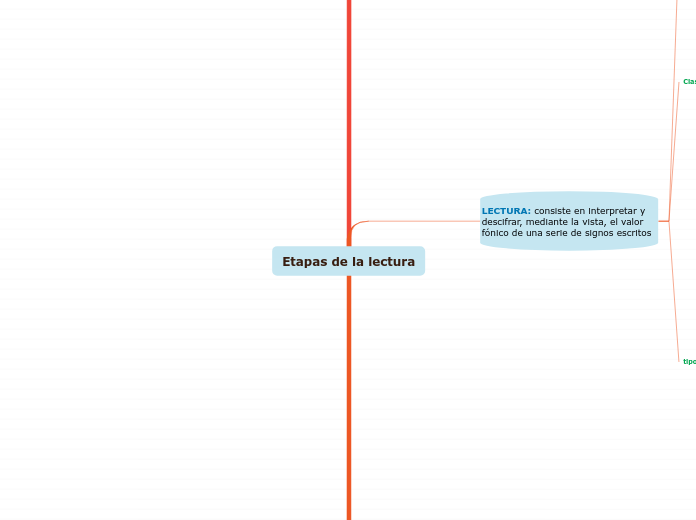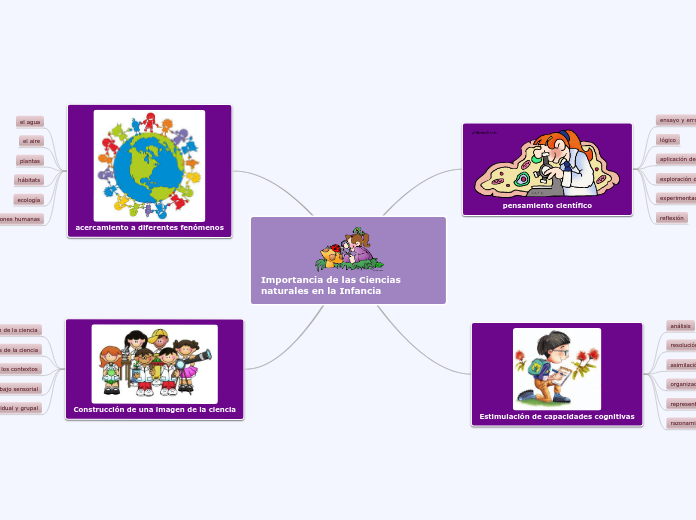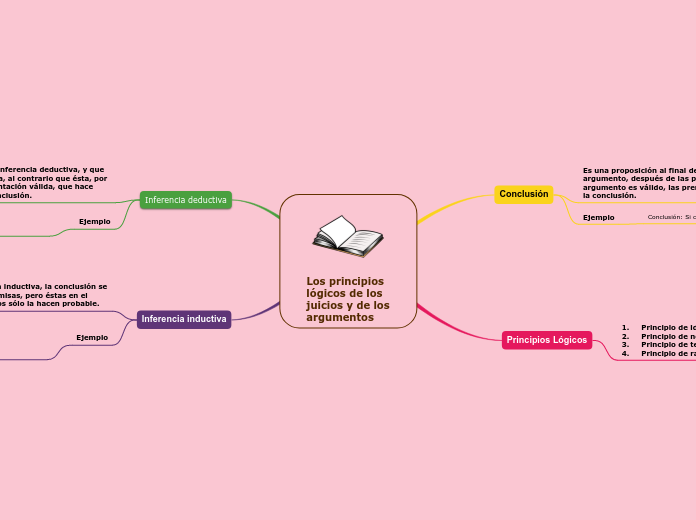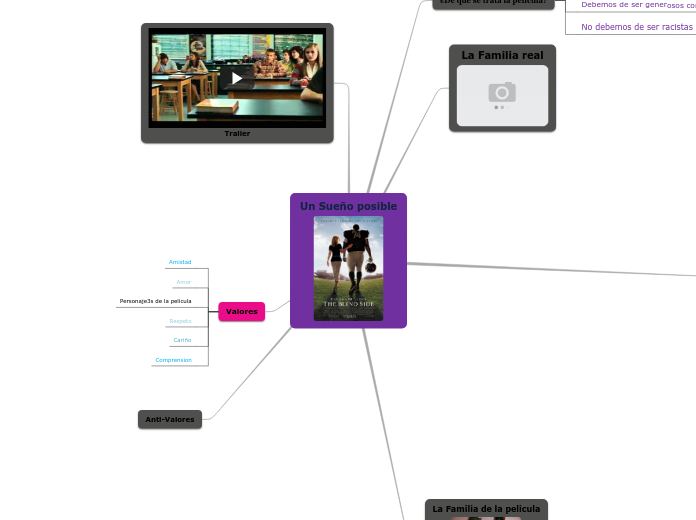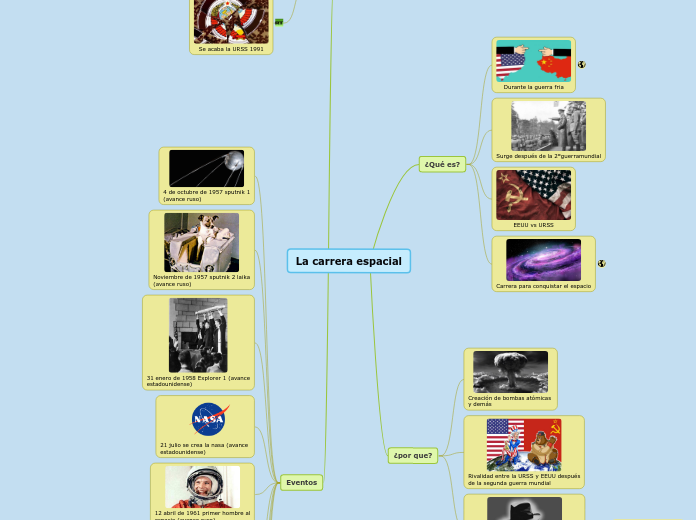Etapas de la lectura
To name your story, you have to think about the overall message and what you want your audience to understand from the story. Also, make it relevant and easy to remember.
POSTLECTURA: Es la etapa en la que se proponen actividades que permiten conocer cuánto comprendió el lector. El tipo de preguntas que se plantean determina el nivel de comprensión que se quiere asegurar.
The ending of a story is essential. We all know that if the ending is weak, what happened before loses its importance. So make it unpredictable, but fair. A resolved ending answers all the questions and ties up any loose threads from the plot.
Nivel Critico Valorativo: Se emite juicio
de realidad o fantasia
de adecuacion y valides
de aprovacion
de rechazo o aceptacion
Nivel Interferencia: se entiende lo que el autor quiso comunicar
This is the closure section of the story.
See examples of possible outcomes below:
- all problems have been solved
- it's clear how each one of your characters ends up
- your main character is transformed by the challenge
inferir relaciones de causa y efecto
Try answering these questions in order for you to come up with a closure:
- Have all problems been solved?
- Is it clear what happens with all your characters in the story?
- Has the challenged transformed your main character?
- How do the characters feel in the end?
inferiri ideas
inferiri causas
Try answering these questions to come up with a closure:
- Have all the problems been solved?
- Is there a clear picture of what happens with each character in the story?
- Has the challenge transformed your main character?
- How do the characters feel in the end?
Nivel Literal: Decodificacion basica de la informacion
This is the moment when the main character surpasses the last obstacle and finally faces their greatest challenge.
The climax usually follows one of these patterns:
- realization
- resolution
- choice
Type in your answer.
Profundidad
se reconocen las ideas y el tema principal
se realiza mas profunda
Primario
Detalles
de causa o efecto
por comprension
secuencias
ideas principales
LECTURA: consiste en interpretar y descifrar, mediante la vista, el valor fónico de una serie de signos escritos
The middle of the story is where you add layers of complications that will lead to the end. Reveal more about the character's journey. Did their personality go through changes? How did they overcome the challenges? And as you build up the story’s central conflict, make it more personal to that character. Also, from the middle act, you have to lead into the final act.
tipos de lectura
There wouldn't be any tension and excitement in your story if there weren't any obstacles in your character's way.
Lectura Involuntaria
La que leemos generalmente por las
calles de manera involuntaria.
Lectura Diagonal
Se realiza eligiendo ciertos
fragmentos de un determinado texto.
Lectura mecánica
Se identifican los términos sin la necesidad de contar
con el significado de ellos.
Lectura creativa
El objetivo principal del
lector no es la comprensión, sino que el placer de leer.
Lectura reflexiva y critica
Mientras se lee, se produce
una lluvia de ideas con
riqueza de contenido
Lectura Comprensiva
El lector no queda tranquilo
hasta haber entendido
perfectamente el mensaje
Lectura selectiva
Permite buscar datos o
aspectos muy específicos
para el lector
Lectura superficial
Es captar la idea general de
los contenidos fundamentales del texto, sin entrar en detalles.
Lectura Silenciosa
Se recibe mentalmente el
mensaje escrito sin
pronunciar palabras.
Lectura
Oral
A story is nothing more than a character overcoming a series of difficulties to reach the desired goal. Obstacles usually create suspense and conflict. In overcoming obstacles, there is growth: weak becomes strong; hatred turns into love; sadness into happiness; wrong into right; lies into truth; or evil becomes good.
See a few examples below:
- stopping a meteor
- finding a killer
- finding love
Es la que se practica
cuando se articula el texto
en voz alta
Clasificacion
Your character(s) need(s) motivation in order to solve the challenge(s).
ESCANEO: el escaneo se basa en la búsqueda de palabras o conceptos particulares en un texto.
LECTURA RÁPIDA: esta clase de lectura es aquella que se lleva a cabo seleccionando sólo aquellos elementos que interesan al lector.
LECTURA DIAGONAL: esta clase de lectura tiene la particularidad de que se realiza eligiendo ciertos fragmentos de un determinado texto,
LECTURA LITERAL: se refiere a leer conforme a lo que dice el texto. Existen dos niveles de lectura literal:
Lectura literal en profundidad: en este tipo de subcategoría se penetra en la comprensión de lo leído.
Lectura literal de nivel primario: aquí se hace hincapié en la información y datos explícitos del texto.
LECTURA DENOTATIVA: esta clase de lectura se caracteriza porque a través de ella se lleva a cabo una comprensión literal de lo escrito.
Secondary characters also might have motivs beacuse of which they may cross path with main character or which might trigger them to help the main character.
LECTURA FONOLÓGICA: a través de este tipo de lectura se perfecciona la pronunciación correcta de vocales y consonantes, la modulación de la voz
Secondary characters might also have motives that lead them to cross paths with the main character or which might trigger them to help the main character.
LECTURA MECÁNICA: es aquella donde se identifican los términos sin la necesidad de contar con el significado de ellos.
Why does your character need to confront this challenge? What does he/she expect to accomplish by solving it?
See a few examples:
- will marry in 3 days
- can fix the mistakes of the past
Definición
Each story has a main character and that character usually needs to solve a problem or challenge. The character's challenge is the one that creates tension throughout the story.
Corresponde al acto de leer propiamente dicho, tanto en los aspectos mecánicos como de comprensión.
PRELECTURA: es una estrategia que nos permite comprender un texto de forma más exhaustiva y detallada.
In the beginning of the story (or the exposition), you will need to introduce the setting and characters. You might also want to introduce the main conflict. This part of the story is important because it gives the reader necessary background information and maybe even a first insight into a character’s personality.
Funciones
The setting (time & place) of a story can change throughout the plot.
Ayuda a acentar mejor la informacion
Mejora la motivación
Sensory details include sight, sound, touch, smell, and taste. These details are important because they create depth in your setting.
See a few examples below:
- the smell of fresh bread
- the scent of freshly cut grass
- rain falling onto the windshield etc.
Aumenta la compresión lectora
Your story can take place wherever your imagination will take you to.
For example: in an elevator, in an enchanted forest, etc. Don't forget to give details of the environment each time the setting changes, otherwise, the story can be confusing. Also, mention the seasons as each of them has unique weather and events.
Exploracion del texto
Characters are essential to a good story. Usually, the protagonist(s) is/are the most affected by the plot. Introduce a character by focusing on their actions, interests, and occupation, as the physical appearance doesn't make a difference in most cases.
Suele hacerse con textos cortos y complejos
Comprender la idea principal del texto
Descubrir cuál es la idea general de un texto antes de adentrarnos en él
Type in the name of your character.
